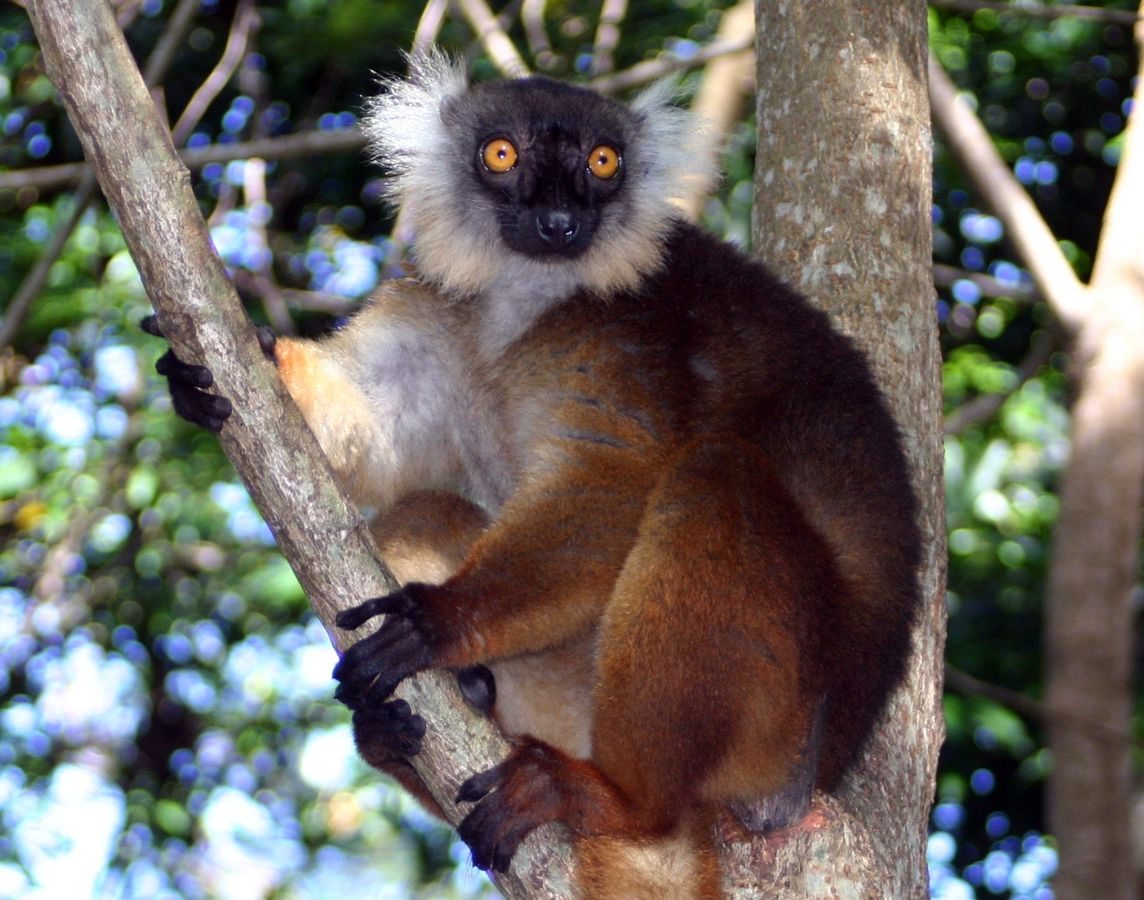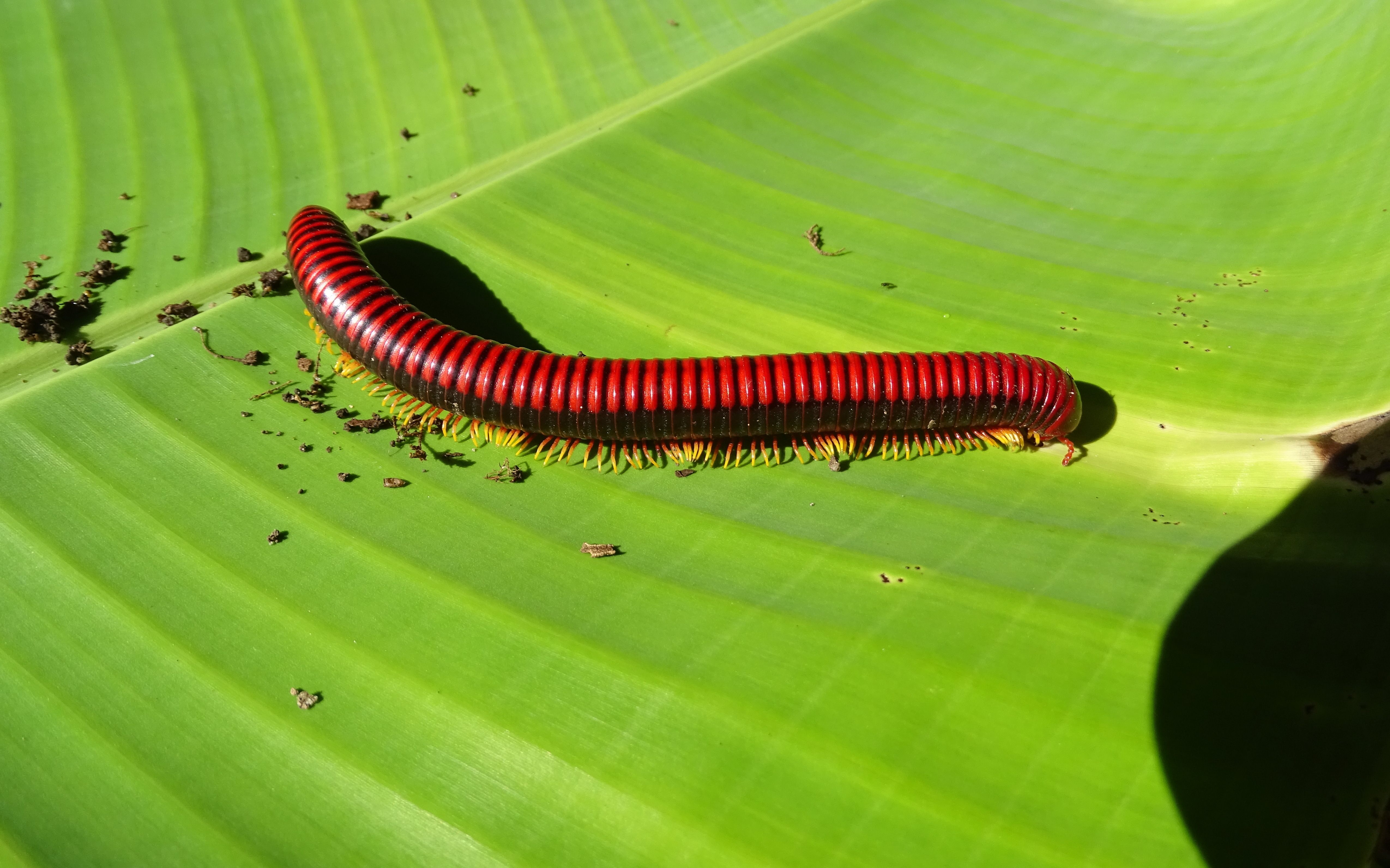Lemurs Get High on Their Millipede Supply

A female black lemur clings to a tree in Madagascar. (Photo: Brocken Inaglory/Wikipedia Commons CC BY-SA 3.0)
There could be a reason why the lemur King Julien XIII and his cronies acted so erratically in the film Madagascar, and why they liked to party so much: they might have been high. On millipedes.
The black lemur, which like all lemurs is endemic to the island of Madagascar, has a diet primarily made up of fruit. Periodically, however, the lemur will capture one of the large red millipedes also found on the island—but not to eat. Instead, the black lemur will bite the millipede gently, and throw it back on the ground. This is the lemur equivalent of taking a bong hit.

Millipedes have poisons like cyanide in their skin, which are released when they are agitated. (Photo: John Mather/Wikipedia Commons CC BY-SA 4.0)
When millipedes are picked up, their defense strategy is to curl up into a coil. Most millipedes also have paired glands in their legs that secrete a toxic combination of chemicals, including cyanide, which effectively deters most predators. But it does not dissuade the black lemur, the stoner of the animal kingdom.
After the lemur bites the millipede, it sprays its toxic secretion, which the lemur then rubs all over its fur. Research suggests that there is a practical purpose to this: the benzoquinone secretion functions as a natural pesticide and wards off malaria-carrying mosquitos. The secretion also acts as a narcotic, which causes the lemur to salivate profusely and enter a state of intoxication.
As for the millipedes? They usually escape the experience relatively unscathed, and crawl away until they are found by the next lemur looking for a quick fix. Chew on that the next time you watch Madagascar.















Follow us on Twitter to get the latest on the world's hidden wonders.
Like us on Facebook to get the latest on the world's hidden wonders.
Follow us on Twitter Like us on Facebook